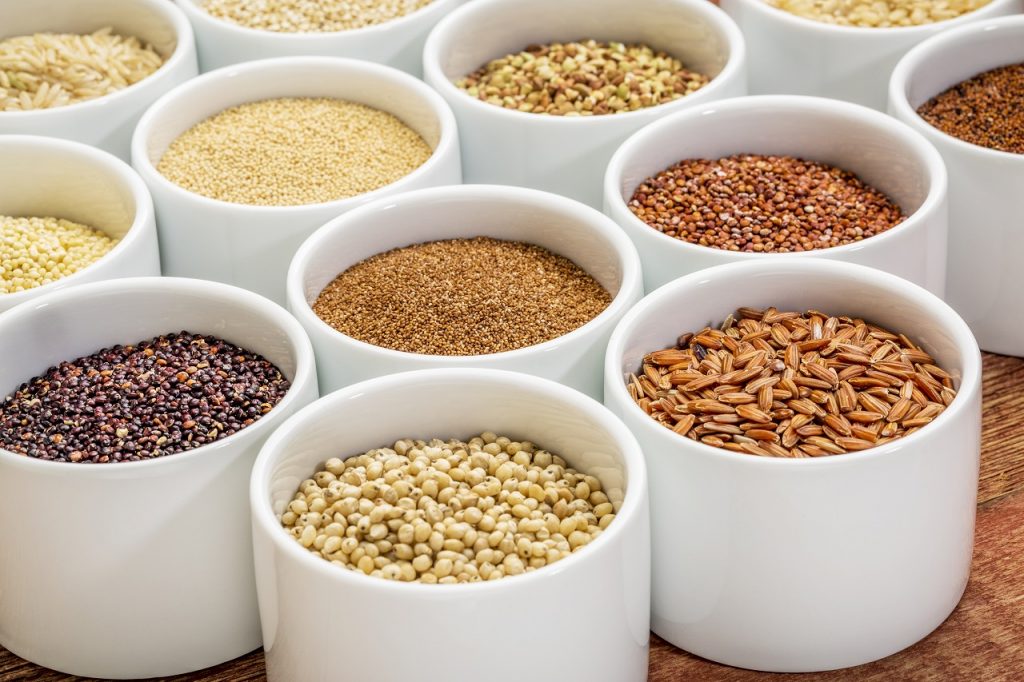 Diabetes is one of the most prevalent conditions throughout the world. Be it Type 1, Type 2 or Gestational. As soon as we realize that we have Diabetes, we immediately start controlling our sweet tooth in order to keep our sugar consumption under control. But apart from cutting down on sweets and adding less sugar to your tea/coffee, it is also extremely important to understand that we have to limit our calorie intake and add foods which have a low glycemic index to our diet.
Diabetes is one of the most prevalent conditions throughout the world. Be it Type 1, Type 2 or Gestational. As soon as we realize that we have Diabetes, we immediately start controlling our sweet tooth in order to keep our sugar consumption under control. But apart from cutting down on sweets and adding less sugar to your tea/coffee, it is also extremely important to understand that we have to limit our calorie intake and add foods which have a low glycemic index to our diet.
Low Glycemic Index foods are those which take a longer time to get digested and therefore, release the sugars in our blood at a slow pace. This, in turn, prevents sudden spikes in blood sugar levels. So if you’ve been replacing your white rice, which has a high glycemic index, with brown rice, there are some other diabetes friendly grains you can explore.
9 Diabetes Friendly Grains You Can Consume
- Amarnath: Gluten free, high protein (15-18%), a great source of calcium, fiber, iron, potassium, and many other vitamins and minerals.
How to cook: Add 2 cups water to 1 cup amaranth grain, bring to a boil, and then simmer for 15-20 minutes. - Foxtail millet: Gluten-free, high in dietary fiber, Low Glycemic index, reduces the levels of triglycerides, LDL and VLDL, magnesium present in millets is a co-factor in various enzymes involved in the secretion of insulin and metabolism of glucose in the body
How to cook: Pressure cook 1 cup of foxtail millet with 2.5 cups water and 1/2 tsp salt for three whistles. Turn off the flame. - Quinoa: Highest protein content, gluten-free, rich in fiber, iron, and magnesium. It is easy to cook as well.
How to cook: Pressure cook 1 cup of quinoa with 2.5 cups water for three whistles. Simmer for 5 minutes and turn off the flame. - Kodo Millet: High fiber and energy content and tastes like rice. Kodo Millet contains Copper, deficiency of which impairs sugar tolerance. Research has identified anti-diabetic compounds i.e. Quercetin and Phenolic acids which are present in Kodo Millet.
How to cook: Pressure cook 1 cup of Kodo Millet with 2.5 cups water and 1/2 tsp salt for two whistles. Turn off the flame. - Buckwheat: High in magnesium, phytonutrients, and dietary fiber and is gluten-free as well.
How to cook: Add 2 cups water to 1 cup buckwheat grain, bring to a boil, then simmer for 20 minutes. - Little Millet: Low cholesterol, gluten-free, high in protein and dietary fiber.
How to cook: Pressure cook 1 cup of little millet with 2.5 cups water and 1/2 tsp salt for two whistles. Turn off the flame. - Barnyard Millet: Gluten-free, has the highest fiber and iron content of all the millets.
How to cook: Pressure cook 1 cup of Barnyard Millet with 2.5 cups water and 1/2 tsp salt for two whistles. Turn off the flame. - Barley: High in soluble fiber which prevents the carbohydrates from getting absorbed too quickly and raising blood sugar levels. Low glycemic index and high in magnesium as well.
How to cook: Pressure cook 1 cup of Barley with 3 cups water for about 25 minutes after the first whistle. - Rye: A very good source of dietary fiber, phosphorus, magnesium, and vitamin B1. It’s a rich source of magnesium too.
How to cook: Soak 1 cup of rye grain for about 2 hours. Combine the grains with 4 cups of water in a pan, bring to a boil, simmer, close with a lid and cook for about 45 minutes.
There you have it! 9 diabetes friendly grains that are great alternatives to white rice or in case you want to switch from brown rice. Before making any dietary changes, consult a doctor or your nutritionist for further guidance and in case you have any allergies.
We hope this article helps you! Do leave your thoughts in the comments below. For more on managing diabetes, check out Healthy Reads.
For further guidance and motivation by certified experts, join the GOQii Diabetes Care program. It’s India’s only diabetes program that is driven by Smart Science and Personal Coaching to improve Fasting Blood Sugar (FBS), Postprandial Blood Sugar (PP), reduce HbA1c levels and let you win gold! You can subscribe here: https://store.goqii.com/diabetescare.
Let’s #DefeatDiabetes and #BeTheForce
 The prevalence of diabetes is alarmingly spreading worldwide. Data from WHO shows that its global prevalence was about 8% in 2011 and is estimated to rise to 10% by 2030. Some of my patients are of the impression that they cannot lead a normal life once they’ve been diagnosed with Diabetes. I always tell them to treat diabetes normally. The main focus should be on food followed by activity and then medication. If instructions are followed well, your diabetes will be under control. However, my experience has been that when it comes to food, most have many misconceptions which are very important to clear. I would like to share few of these common myths about Diabetes with you as well.
The prevalence of diabetes is alarmingly spreading worldwide. Data from WHO shows that its global prevalence was about 8% in 2011 and is estimated to rise to 10% by 2030. Some of my patients are of the impression that they cannot lead a normal life once they’ve been diagnosed with Diabetes. I always tell them to treat diabetes normally. The main focus should be on food followed by activity and then medication. If instructions are followed well, your diabetes will be under control. However, my experience has been that when it comes to food, most have many misconceptions which are very important to clear. I would like to share few of these common myths about Diabetes with you as well. Diabetes has been listed as an epidemic and it seems to be on the rise, worldwide. Diabetes is a disorder which alters the blood sugar levels and production of insulin that can cause various complications if left untreated. It can be treated through lifestyle modifications and exercises. We do have few spices and herbs available in nature, along with dietary changes, to help
Diabetes has been listed as an epidemic and it seems to be on the rise, worldwide. Diabetes is a disorder which alters the blood sugar levels and production of insulin that can cause various complications if left untreated. It can be treated through lifestyle modifications and exercises. We do have few spices and herbs available in nature, along with dietary changes, to help  How often have we come across friends or family members with diabetes, taking the condition lightly, being happily dependent on prescribed medications? But, the fact is that diabetes can be controlled or reversed if adhered to self care along with the prescribed medications.
How often have we come across friends or family members with diabetes, taking the condition lightly, being happily dependent on prescribed medications? But, the fact is that diabetes can be controlled or reversed if adhered to self care along with the prescribed medications.


